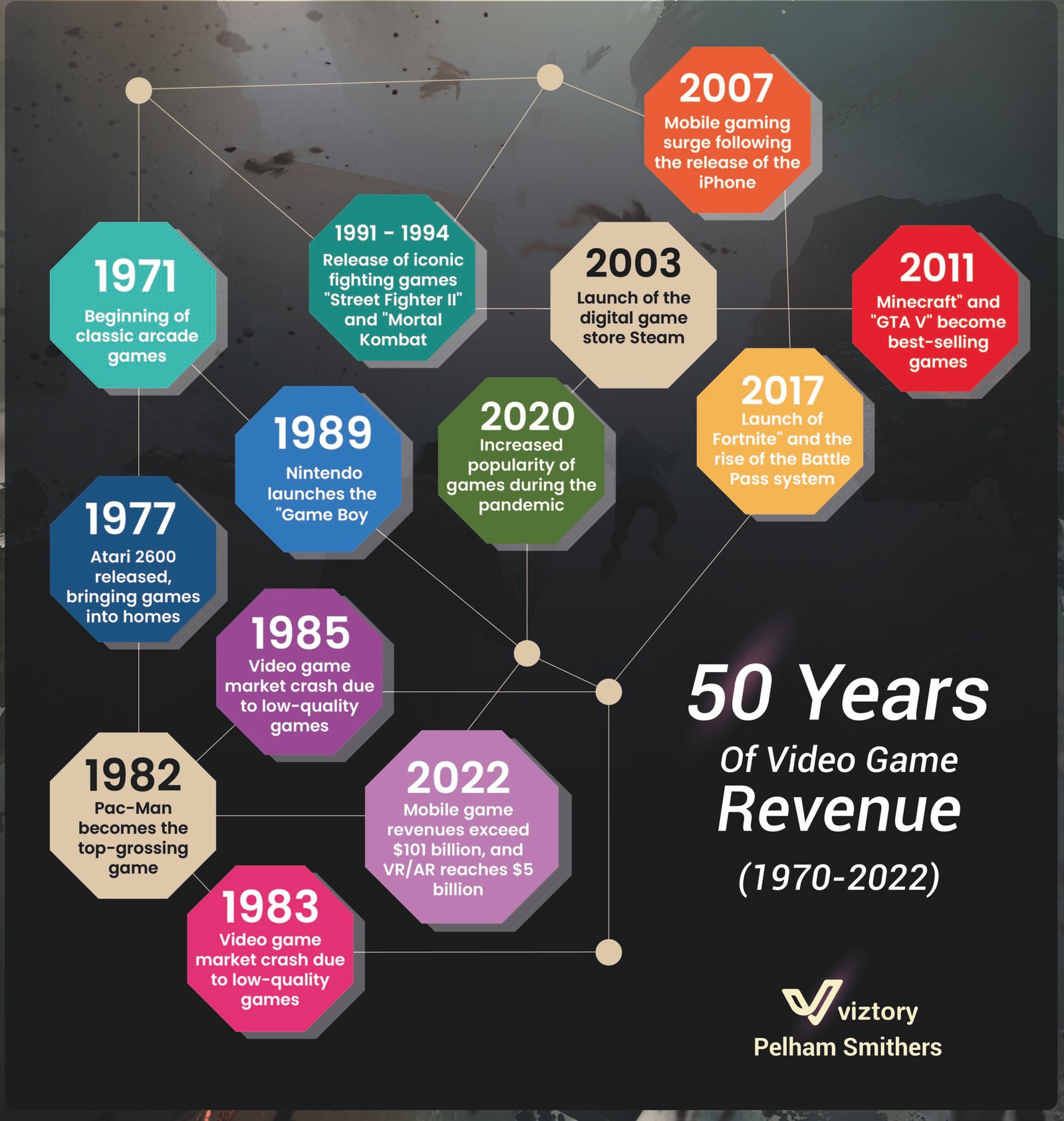The Evolution of Video Games: Fifty Years of Innovation and Technological Impact
-
Aug, Fri, 2024
The Evolution of Video Games: Fifty Years of Innovation and Technological Impact
The Beginning of Video Games (1970-1980)
The 1970s witnessed the birth of classic games with the release of arcade games that garnered significant attention. In 1977, the Atari 2600 was launched, becoming the first device to bring video games into homes. This marked the beginning of a new era in digital entertainment.
Growth and Crises (1980-1990)
In the early 1980s, Pac-Man became one of the most popular video games, achieving top-grossing status. However, the increase in low-quality games led to a severe industry crash in 1983 and 1985, as these games caused the market to collapse.
Despite these crises, Nintendo revitalized the industry in 1989 with the launch of the Game Boy, paving the way for the success of portable gaming.
Resurgence and Game Development (1990-2010)
In the early 1990s, iconic fighting games like Street Fighter II and Mortal Kombat were released, sparking widespread interest in fighting games and making them one of the most popular genres. By the end of this period, particularly in 2003, the digital game store Steam was launched, revolutionizing game distribution and making access to games easier than ever.
In 2007, the era of mobile gaming began with the widespread adoption of smartphones, especially after the release of the iPhone. This period marked the beginning of a massive wave of mobile games, with the industry experiencing significant growth.
Advanced Games and Virtual Reality (2010-2022)
The industry continued to evolve with the release of games like Minecraft and GTA V in 2011, both of which became best-selling games. In 2017, Fortnite was launched, a major title that reflected changes in game monetization through the Battle Pass system.
During the COVID-19 pandemic in 2020, video games saw a massive surge in popularity as people turned to digital entertainment during lockdowns. By 2022, mobile game revenues exceeded $101 billion, and virtual reality (VR) and augmented reality (AR) technologies saw significant growth, reaching $5 billion.
The Integration of Technology and Video Games
Over the years, technology has played a key role in shaping the video game industry. From simple arcade technologies to the emergence of portable home devices, and the widespread growth of mobile games, technological innovation has always been at the heart of this evolution.
Now, with advancements in VR and AR technologies, the boundaries of the digital experience continue to expand. It is expected that in the future, we will see more integration between technology and video games, offering players more interactive and immersive experiences.
Conclusion
The history of video games represents an unparalleled success story, with growing revenues and a significant cultural impact. As technology continues to advance, video games will remain an integral

